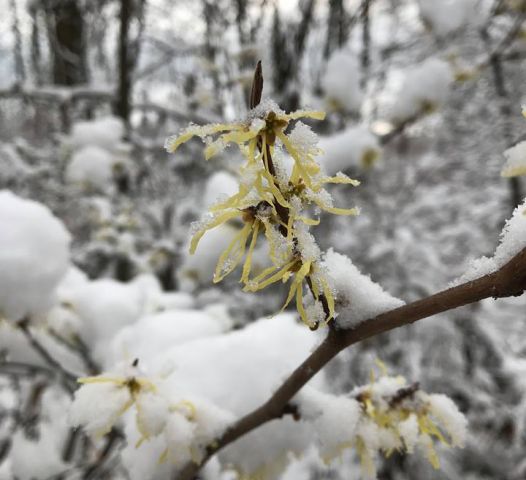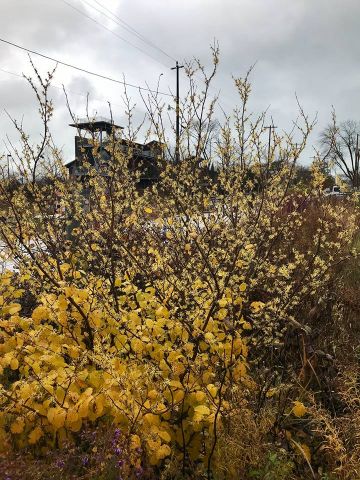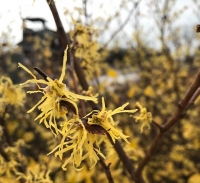The flowers are pollinated by a number of wasp and fly species as well as owlet moths which are active even on cold nights. The flowers also have the ability to curl up when the temps drop below freezing and unfurl again when temps are favorable (*supposedly- although see added snow photos). In addition to its yellow flowers, CWH has very large asymmetric dark green leaves which are food for the caterpillars of more than 15 different moths.

Furthermore, CWH has a picturesque v-shaped growth form. Older shrubs may have stems that grow straight up 10-15’ before arching outward, sometimes flattening out in a plane. Some witch hazels hold onto their leaves into the winter while others shed them in mid fall. Flowers pollinated this year will take a full year to form mature seed capsules next fall from which seeds are ejected up to 40 ft. 
In the wild witch hazel is usually found on well drained clay slopes, rocky slopes, or ravines in wooded areas, not because it can't grow elsewhere but because that is a niche in which it has a competitive advantage. CWH will grow in a variety of settings in cultivation from full sun (where it requires consistently moist, well drained soil) to full shade (where it can be quite drought tolerant).
CWH should also be planted in a location that is at least partially protected from prevailing winds, which can damage its large leaves. Shrubs which receive several hours of sun each day tend to have more flowers. Several witch hazel cultivars, derived primarily from hybrids of northeast asian species, are sold at nurseries, but our native species is better adapted to our soils and climatic extremes. Another species, vernal witch hazel (H. vernalis) is native to the Ozarks but blooms in late winter/early spring instead of fall.





